Why & How
An Accidental Trajectory:
Trajectory: defined as being a “path described by a body moving under the influence of given forces”

2019
“Called to Taiwan for Christmas”
For a family event
Making the journey from UK by train
including the route between
Moscow & Beijing
The December Journey was not caused by, for example, a need to buy food…….. (a trajectory created by ‘the force’ of physical need)
….but one created from an essentially practical requirement: of visiting a son’s parents-in-law….
A journey honouring a new relationship established in 2018 by the visit of those parents-in-law, to Wales.
A journey to Taiwan occurring at a time when son, partner & infant would also be present.
A very particular trajectory, begun, in the planning phase, in late 2019.
To occur during the western mid-winter season of Christmas
Apparently, in the consideration of ‘trajectory’, there are established principles allowing measurement.
The trajectory that was to occur following the decision to visit Taiwan departed from any form that might be regarded as ‘classical mechanics’.
It immediately became more associated with quantum mechanics…
…for what occurred, even before the ‘moving body’ was set upon its course, could not allow for the possibility of position and momentum to be measured simultaneously (or consistently).
There were too many variables.

Journeys have been something of a personal theme – but taken at walking pace, or for work and almost entirely confined to Europe.
Once again a son’s influence applied:
If travelling to Taiwan, a far and distant place, should we not include other places in the region….~?
Many people regularly travel such distances, for work & pleasure: using Air-flights.
Whilst journeys may be for pleasure – even that of the journey itself, I lack interest in travelling without practical purpose.
Travelling should require a cause greater than simply ‘pleasure’ (of the journey) or to gawp: for ‘sight-seeing’, or for ‘vacation’ based in a distant ‘resort’.
‘Sight-seeing’ and ‘vacation’, the terms neatly underline the purposelessness of such travel, For what is sought in such actions?’
Sight-seeing’:
What are the ‘forces’ that people believe are operating such that they cause a person to go and stare at a place, person or object?… ‘bucket list’ is an appropriate term for those who simply collect destinations or activities as a ‘list’. What value is there to see the whole world yet ignore one’s own soul. no Visits and wanderings with meaning or value – except for the pleasure principle of the participant.
Where is encounter, engagement, variation, change, growth?
Vacation:
implies an emptying, a release from obligation or duty.
Such an action may have considerable value, may be an important component of a person’s ‘well-being’ – but could surely be achieved without lengthy and frequently stressful ‘travel’.
Travel caused by devotion & passion are acceptable in that such emotions are essentials of the human condition.
Travelling to ‘learn’ may also be valuable (the process is a form of devotion & true learning is manifest through behaviour change, thus purposeful).
I have no desire to simply stare at places or people and I also know that there would be no value in attempting ‘vacation’ by attaching extra visits.
The only element that could be added to the Taiwanese visit was that of the ‘means’ by which we travel.
Having agreed to travel ‘planning’ is required.
“A path described by a body moving under the influence of given forces”
What path may be created; what forces might influence such movement? Should these not be carefully considered before the body ‘moves’?

Without careful consideration of route, places and motive power (physical and mental) could prevent the ‘body’ from ever arriving at the agreed destination.
We could fly:
out and back. Straightforward, purposeful and capable of organising in the few minutes required to make reservations.
But son had suggested develop this simple process.
We decided to focus on the journey.
To follow a route that remains direct, that does not allow for diversion of purpose but which, not being airborne, lacks the speed of travel which has become commonplace.

This decision, given the other requirements that life held in the autumn of 2019, may be regarded as unfortunate.
A decision taken without reflection on the previous considerable experience of planning lengthy and complex journeys.
An unseen internal trajectory imposed itself on that of the outer.
The process of preparation, which did not begin early enough, became its own complex time & energy consuming journey.
There was much to consider – some easy, such as the rail travel as far as Poland. After Poland there are complexities of visas and careful selection of trains & the onboard accommodation.
To Moscow remained comparatively simple.
Beyond Moscow careful preparation for the lengthy, 6 days on a single TranSiberian train (Mongolia & China route) is important.
In deciding to travel by rail the general expectation was of a reasonable degree of comfort – as previously experienced in day and night journeys across Europe and Turkey.
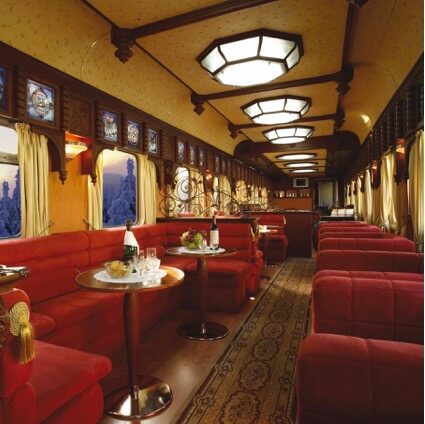

The above equated, approximately, to expectations – somewhat old fashioned but with considerable satisfying comforts.
The six days from Moscow to Beijing, regardless of the tedium of length, would pass pleasantly enough.
The reality for a traveller on the regular trains appears to be somewhat different from the above:

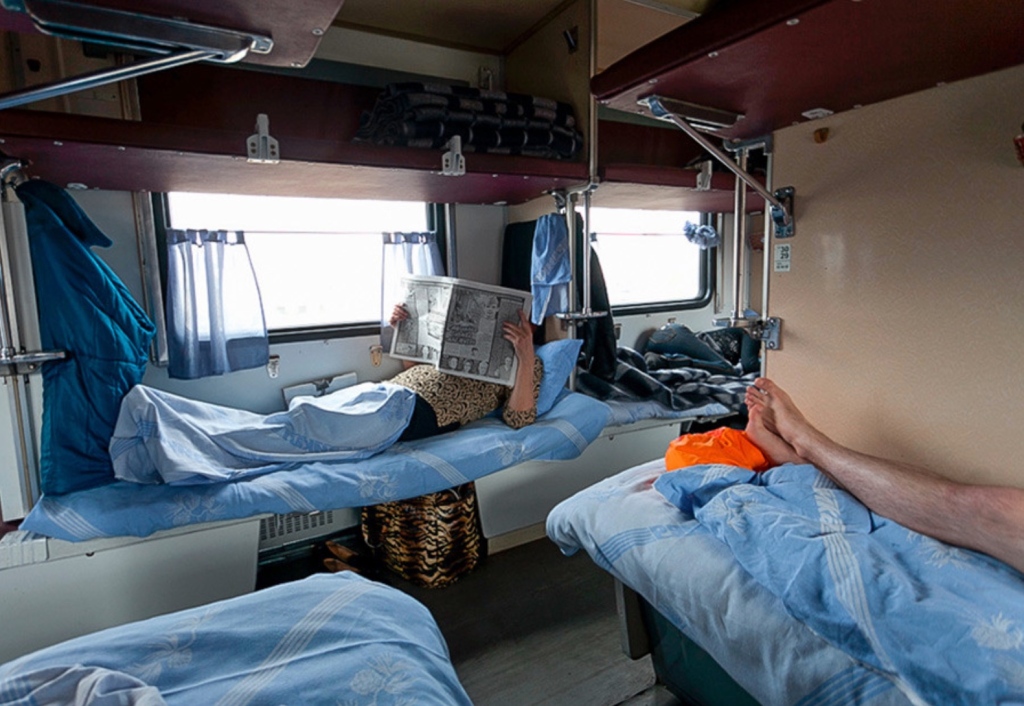

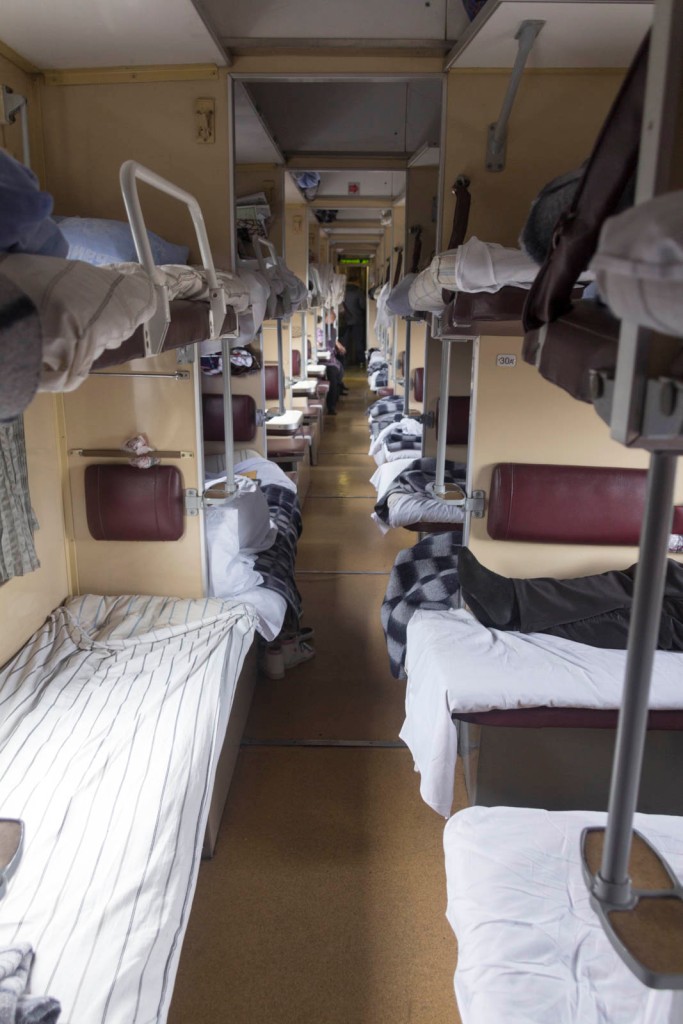
The train seems to be of a style that has survived from earlier times:

There is an aspect to the normality of the above pictures that depresses and irritates.
I have taken groups on travels in which ‘roughing it’ as we say in UK (ie being without our usual comforts) is a part of the experience (most mountaineering expeditions are extreme examples).
Many of the on-line images & blogs are presented by young western tourists having what is often ridiculously called a cheap ‘trip of a lifetime’ – before they return to their comfortable domesticity. Not so for the majority.
Individuals, writing their blogs, often seem surprised that this is a ‘working’ railway, a complex system that allows people to travel purposefully, not simply for an ‘interesting experience’.
The train is but an exemplar of what, for many, is normal life – one that for various reasons offers less choice & opportunity than is available in western countries. Such basic travel arrangements (which I have experienced in other places) were all, due to recent political regimes, that was possible… ‘were’…. ha!… still are!
Some bloggers show greater curiosity, awareness & social understanding:
“I expected the train to be filled with tourists, but most of the other passengers seemed to be Russians traveling for work.”
“Why did you not take a plane to Moscow?”
I tried to explain that it was for the adventure! The experience! They didn’t get it.”
“Chatting with locals [using google translate] who were absolutely perplexed about why I would take the Trans-Siberian for fun was an added bonus.”
As we travel we will, no doubt, discover (as usual) that the generosity of the human spirit transcends the physical conditions required for survival. That does not prevent a sense of anger both at the ‘system’ that created such travel conditions and at the casual manner in which those who never ever have to submit to such regimes, casually ‘enjoy their ‘extreme’ suffering’ (for 2 or 3 days) – and then publish their ‘enjoyment’ as if that is all that occurs. One western blogger writes – in surprise – at discovering a fellow in the same compartment who is travelling all the way, on the same train, from Beijing to Moscow: presented as if such was a crazy action. The blogger further complains that the traveller simply wanted to remain in his bunk – uncommunicative. Have such people never considered that this journey was for people such as the silent passenger something more than just an unusual pleasure trip to be added to all the other ‘trips’ he, the blogger, is fortunate enough to be able to enjoy?
So – before we even start, there are aspects of the popularity of this lengthy journey that arouse questions – both of others and of oneself.
Beyond the personal questioning (‘angst’) are the practical considerations required after committing to travel.
Our first error was to have failed in the very basics: understanding a little of what was to be attempted & of what is required, before committing.
“The Trans-Siberian Railway is the most overrated train ride in Russia (and perhaps the world)”
Key issues being:
-
- Length of journey,
- Lavatories,
- The conductor lottery
- Other passengers
- Platform cozeners, rogues and pesterers
- Price
Too late we learn – our price had been paid.
Further discoveries ensued – such as the temperature on the train
The season outside should not be judged by general lack of clothing shown in most pictures. Apparently the carriages maintain an extremely high temperature
So what may provide at least some pretence of comfort.
Our decision to travel First Class:…..?


Th Chinese train which forms the Trans-Mongolian (our train) has what is called a Deluxe soft sleeper

One privilege is direct access to a shared lavatory.
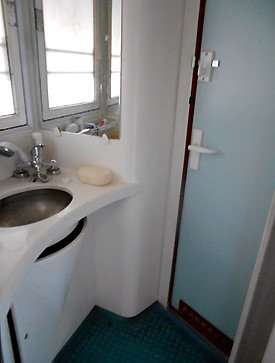

Well – none of this seems to be of much comfort even when accompanied by a helpful YouTube video demonstrating how ‘Pootin’ operates.
Further:
“The ride can be a bit bumpy at times, owing to the age of the carriages and accumulation of ice under the train in the winter.”
So we prepare:
shorts, T shirts, slippers, best quality woollen thermal underwear, quilted snow-goose filled jackets
buy lightweight knives, cups, bowls & food capable of being re-hydrated with water from the carriage hot water boiler.

This is usually called a Samovar – but on the Trans-Mongolian route we are following, it seems to be never more than a basic coal fired water heater.
A few days living on cup-a-soup, porridge & whatever junk food might be acquired from platform hustlers…… what more could one wish for on a Christmas journey….. reindeer perhaps?
So much of what has been discovered before the journey begins has revived memories of travel on Romanian railways in the early ’90s.
On the basis of that experience, it is possible to look forward with a degree of pleasurable anticipation – as nothing viewed or read re: the Trans Sib compares with the occasional horrors encountered whilst travelling across Romania.
The consequences on the physical trajectory of two bodies (human) & the impact on those two bodies as they cross Europe and Siberian Asia & eventually to China and Taiwan, may be judged on what follows
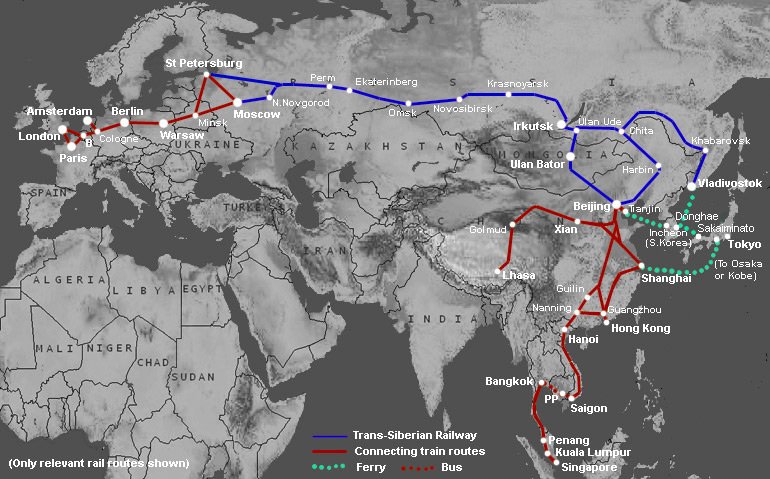
Well…. nearly but not quite…..

… the physical journey (by rail) begins at Church Stretton railway station.
From Sarn the journey is by car to Church Stretton, thence by rail, via Crewe, London, Brussels, Köln, Berlin, Poznań, Mосква (Moscow), Иркутск (Irkutsk), Улаанбаатар (Ulaanbaatar) to 北京市 (Beijing) and finally by air to 臺北市(Taipei)

12th December: the journey begins
Trans-Sib to Taiwan: Part 2: Church Stretton to Moscow